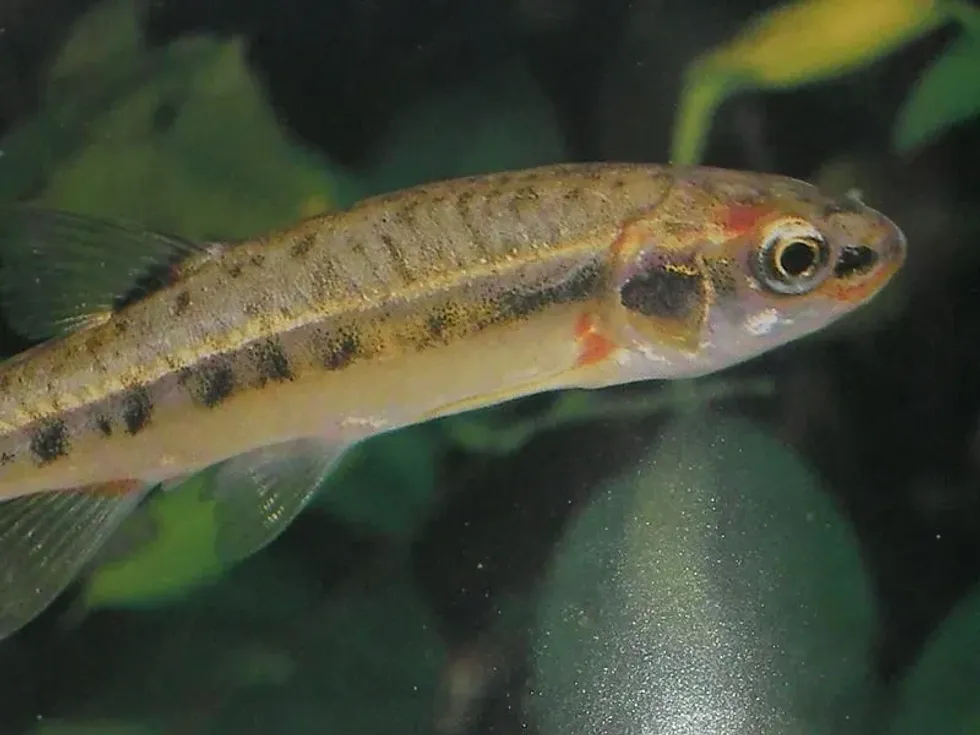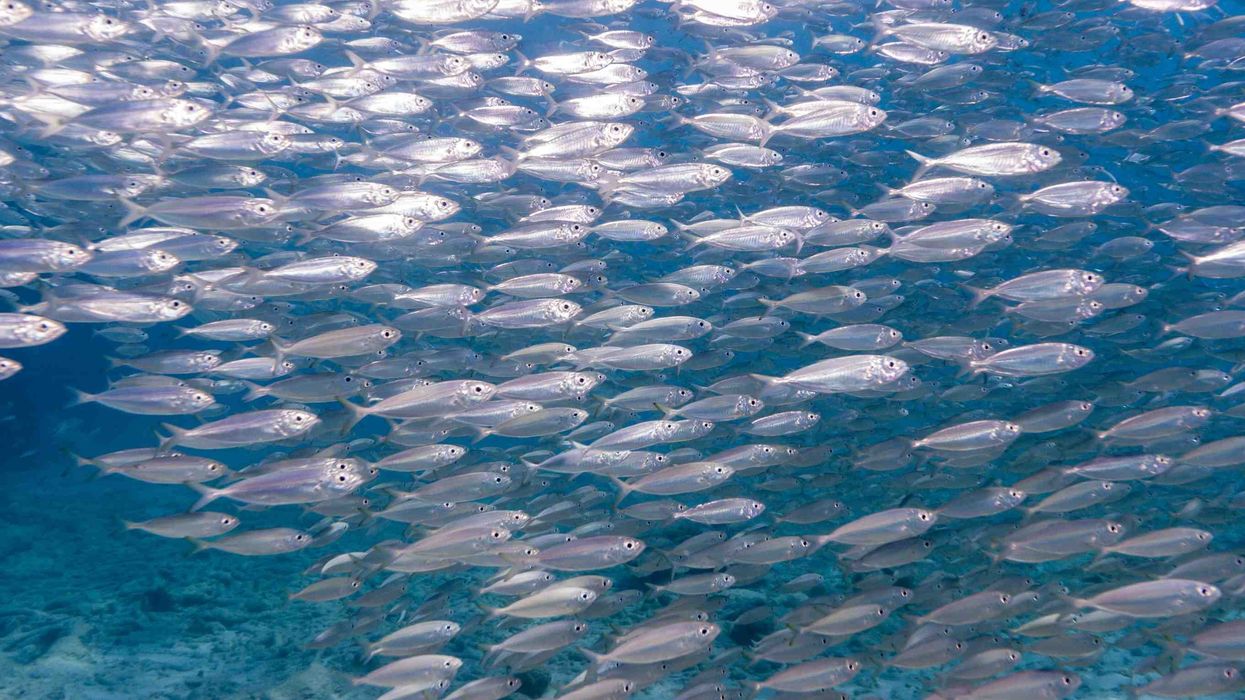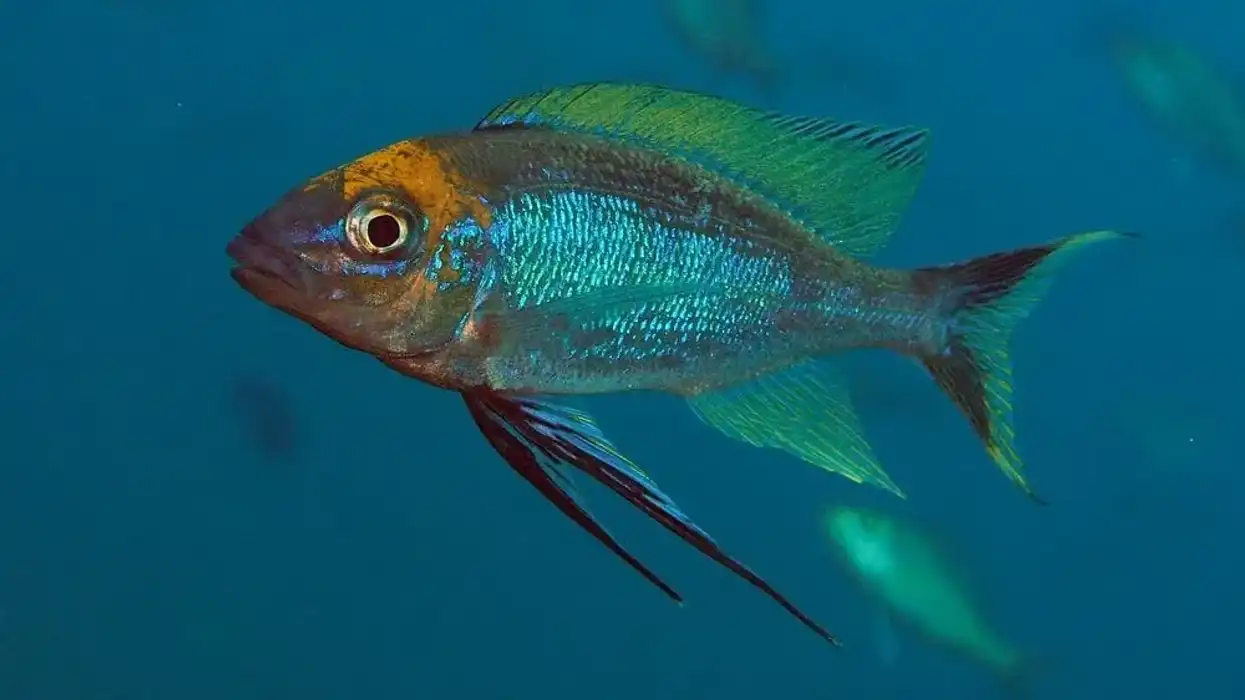The cutlip minnow belongs to the Cyprinidea family of freshwater fish (minnow). It can grow to be around 6.3 in (16 cm) long.
It is a medium-sized minnow. Its robust body, silvery sides with a greenish-purple sheen, and tri-lobed lower mouth set it apart from all other fish species.
It may be differentiated from other minnow species in Canada, North America by its trilobed lower mouth.
This species is seen near the northern end of its distribution in Ontario, where it is found in the lower Ottawa and St. Lawrence River drainage regions. Because there has been little study on the cutlip minnow, it is impossible to say whether the species is in decline.
Recent studies show that the cutlip minnow has vanished from certain historic locations, but new, low-abundance populations have been discovered in the St. Lawrence River and its tributaries, suggesting that the species' condition is stable. After you have read through this information on Exoglossum maxillingua, do check out our articles on white cloud mountain minnow and longhorn cowfish.
Cutlips Minnow Interesting Facts
What type of animal is a cutlips minnow?
The cutlip minnow (exoglossum maxillingua) is a type of fish.
What class of animal does a cutlips minnow belong to?
The cutlip minnow (exoglossum maxillingua) belongs to the fish animal class.
How many cutlips minnows are there in the world?
Exoglossum maxillingua species has a significant number of recorded occurrences. The total adult population is unknown, although it appears to be fairly substantial. This species is widespread. The trend during the last ten years or three generations is unknown, although it is likely to be rather constant. It appears to be decreasing in Ontario, Canada due to environmental degradation.
Where does a cutlips minnow live?
The cutlip minnow is widely found in northern North America in Atlantic coastal drainages. However, there is evidence of falling populations in certain river systems.
It has been documented in the St. Lawrence River drainage in Canada. Its range is restricted to eastern Ontario, where it may now be found in three locations.
There are seven streams where it has been gathered in history, as well as the St. Lawrence River drainage. It is more common in Québec, where it has been discovered in a number of rivers from 1935 until the present.
What is a cutlips minnow's habitat?
The cutlip minnow (exoglossum maxillingua) is typically found in the clear or tea-colored rivers with a width of 39-788 in (1-20 m) and solid rocky substrates that are commonly combined with gravel, sand, and mud. In history, it has also been discovered on hard clay and shale bottoms in Québec.
Aquatic vegetation is common, and the river current is weak. In June and July, it was discovered in water temperatures as high as 78.8 F(26 C).
It has been discovered in the St. Lawrence River, usually at the bottom of fast-flowing rivers. The cutlip minnow is also reported from streams in the Laurentians of Québec.
Who do cutlips minnow live with?
Cutlip minnows (exoglossum maxillingua) are known to live in packs.
How long does a cutlips minnow live?
These fishes are known to have a life of two to four years.
How do they reproduce?
Male minnows start mating by locating and preparing a nesting location for reproduction. This usually happens between May and September.
Mature male minnows prefer to build their nests on the undersides of horizontal surfaces like rocks, wood, or plants. A male minnow conducts a variety of mating activities in order to attract female minnows to his nest.
When approaching adult female minnows, the male will swim back and forth in the nest region, establish close contact with passing females, and vibrate his body. Fertilized eggs are then laid in a single layer on the ceiling of the nest location. Male minnows are solely responsible for the care of the eggs.
They use their dorsal pad to clean the eggs and fan the nest eggs to ensure the unborn minnows get enough oxygen. The eggs hatch after roughly a week.
What is their conservation status?
This species' range extends from St. Lawrence and Lake Ontario south into Virginia and is categorized as Least Concern by the IUCN Red List. Though it is categorized as threatened in the Canadian province of Ontario, but it may never have been widespread there because it is located in the far north of its range.
Cutlips Minnow Fun Facts
What do cutlips minnow look like?
The cutlips minnow (exoglossum maxillingua) is a large-bodied minnow that may grow to be approximately 6 in (15.2 cm) long. Its lower mouth is trilobed, with a central bony tongue-like lobe, two lateral fleshy lobes, and no maxillary barbels, which distinguishes it from all other minnows of North American.
The back of an adult cutlips minnow is olive-gray to olive-green, with silvery sides with a greenish-purple gloss, and a white belly. Aside from the reproductive season, no noticeable outward distinctions exist between the sexes.
Mature males grow tubercles on their paired fins during the reproductive season. Juveniles have a midline stripe and a distinctive mark at the base of the caudal fin.

*Please note that this is an image of a fathead minnow, not a cutlip minnow. If you have an image of a cutlip minnow, please let us know at hello@kidadl.com.
How cute are they?
Exoglossum maxillingua, the cutlip minnow, is a tiny and highly adorable, and colorful fish. If you already have fishes in an aquarium or are thinking about obtaining fish as pets for the first time, the cutlips minnow is a great addition.
How do they communicate?
The majority of communication is done through the use of signals. This is particularly common during the breeding season. They also use vibrations of the mouth to communicate with one another.
How big is a cutlips minnow?
Cutlip minnows are rather small fishes that will fit in the palm of your hand.
How fast can a cutlips minnow swim?
Cutlip minnows swim at a reasonable speed for a pet fish. They are calm and are found near the bottom. If they exhibit any symptoms of trouble moving, it indicates that they are out of shape.
How much does a cutlips minnow weigh?
The exact weight of the cutlips minnows is unknown, but guessing from its small size you can say that they might weigh a few grams.
What are the male and female names of the species?
A female cutlips minnow does not have a special name; both male and female fishes are simply referred to as fish.
What would you call a baby cutlips minnow?
There is no special name for the baby cutlips minnows as of now.
What do they eat?
The cutlips minnow is a specialist bottom feeder, although it may switch to other food sources if its main food source is unavailable. It feeds on aquatic invertebrates such as trichopteran larvae, oligochaetes, plecopterans, chironomids, and mollusks.
Are they dangerous?
The cutlips minnow is not dangerous to humans.
Would they make a good pet?
No as they are endangered they are illegal to have as pets.
Did you know...
Male cutlips minnows construct nests in order to attract a partner. The male excavates a depression at the river bottom and removes any sand or mud. He then transports carefully chosen pebbles to line the nest. When a female lays eggs in the nest, the male covers them with the gravel he has collected.
The cutlips minnow is known to attack and devour the eyes of other fish, earning it the moniker eye-picker.
How fast do fathead minnows reproduce?
Fathead minnows spawn every four to five days but can spawn as frequently as every two days. Females typically lay 100–200 eggs every spawn, with bigger females laying 200–400 eggs.
What is the biggest minnow in the world?
The biggest minnow in the world is the giant barb (Catlocarpio siamensis), which can grow to be up to 10 ft (3 m) long and weigh over 140 lb (63.5 kg). It is found in Southeast Asia and is occasionally maintained in ponds for food.
Here at Kidadl, we have carefully created lots of interesting family-friendly animal facts for everyone to discover! For more relatable content, check out these pumpkinseed sunfish facts and common dolphin fact for kids.
You can even occupy yourself at home by coloring in one of our free printable cutlips minnow coloring pages.
*Please note that the main image is of a minnow, not a cutlip minnow. If you have an image of a cutlip minnow, please let us know at hello@kidadl.com.










